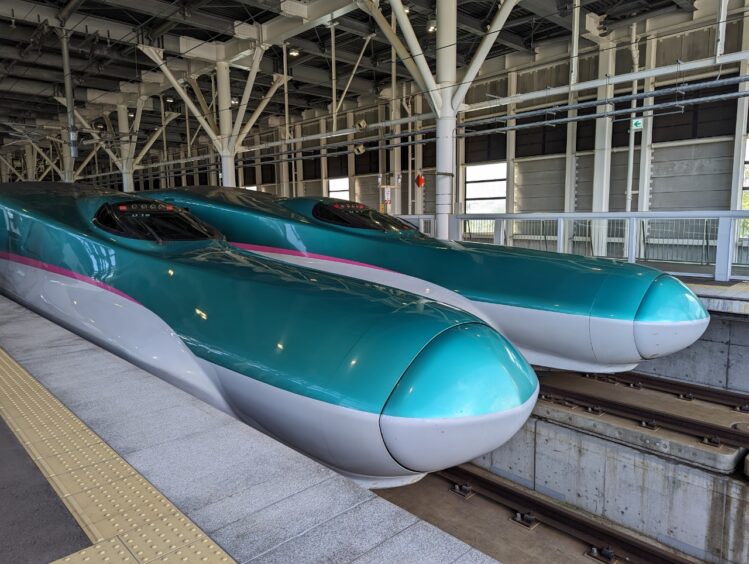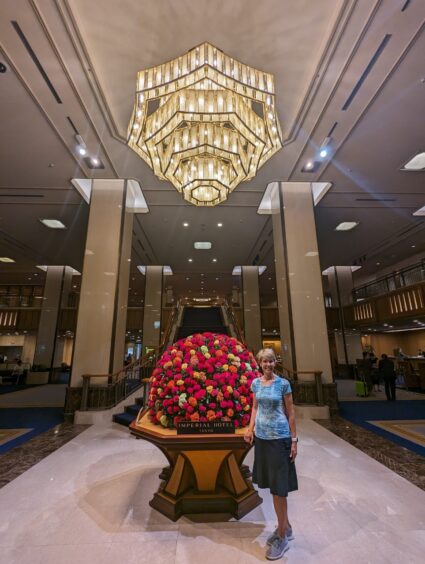
Japan is a relatively small country (California is a bit bigger) but is packed with so much history, culture, and natural beauty that it’s difficult to narrow down the choices. There’s so much to appeal to so many different interests that there are plenty of opportunities to personalize an itinerary. Our three weeks in Japan included a loose plan, but now I can share a complete itinerary with you. My husband and I wanted to balance our time between cultural activities in the cities and hiking in the countryside, with a strong dose of food-related activities and plenty of train travel in between.

We spent roughly one week around Tokyo, one week on the northern island of Hokkaido, and one week traveling around lower Honshu, the main island of Japan. The last week included Kyoto, Hiroshima, the Nikko area and Mount Fuji. I loved the contrast of the pulsing megacity of Tokyo with the pastoral scenes and rugged mountains of sparsely populated Hokkaido. This set the tone for an itinerary that evolved into cultural activities in cities followed by hiking through forests with breathtaking views in natural surroundings.
Our itinerary was 25 days but could easily flex to a 21-day or 28-day trip.

For this three-week trip to Japan, we blocked out chunks of time in the three geographic areas we wanted to visit, including Tokyo, Hokkaido, and the southern half of Honshu. We noted a few things we wanted to do based on what we gleaned from our preliminary research and suggestions from friends but didn’t make any reservations other than the first few nights in Tokyo.

Are guidebooks outdated? I still use Lonely Planet guidebooks to get itinerary suggestions and to have a centralized place to gather reliable information. I like the digital version of guidebooks, so I don’t have to carry a brick. Lonely Planet Japan (Amazon affiliate link: if you click and buy, I get a few cents!) had good information on the places we were headed to, and I enjoyed reading about the next place on our list the night before.
I don’t use guidebooks for things that change quickly, such as transportation schedules or prices for lodging—the internet shines for this. So much of what is available on the internet comes from commercial sources offering tours or from blogs (like this?) that vary in quality (doing my best to make mine useful!). I used several apps for planning, including the following:
See my article, These 10 Apps Make Travel Easier, and my review of the Timeshifter app for more information.

I’ve started using Chat GPT, an artificial intelligence tool, to get a rough idea of a potential itinerary. It helps to see an example of how to divide the time between the days we have in a trip, and I provide a detailed prompt that includes our interests, so it won’t include things like nightclubs or Disney activities or shopping, activities that not of interest to us. It might sound odd for a travel writer to suggest using ChatGPT, but I believe artificial intelligence can be a useful in addiditon well crafted blogs.
I used this prompt:
“Please suggest an itinerary for a three-week trip to Japan. I like hiking, hot springs, food, and architecture. I would like to include Tokyo, Hokkaido, Mt, Fuji, Kyoto, and Hiroshima. What else should I do?”
Here’s a quick look at our itinerary. Details for each area are covered in articles listed at the end, but this provides the overall view. Lodging is listed in parentheses.
 Previous Post
Previous Post

Inga Aksamit 2 says:
We all have different goals when we travel and Hokkaido might not work for you. We loved our time there and it was a highlight of our trip. Where would you recommend for people who love hiking and spending time outdoors?